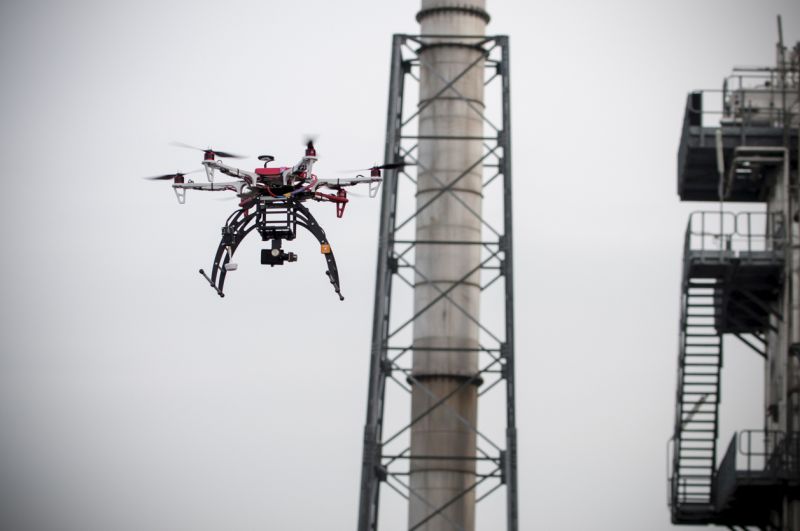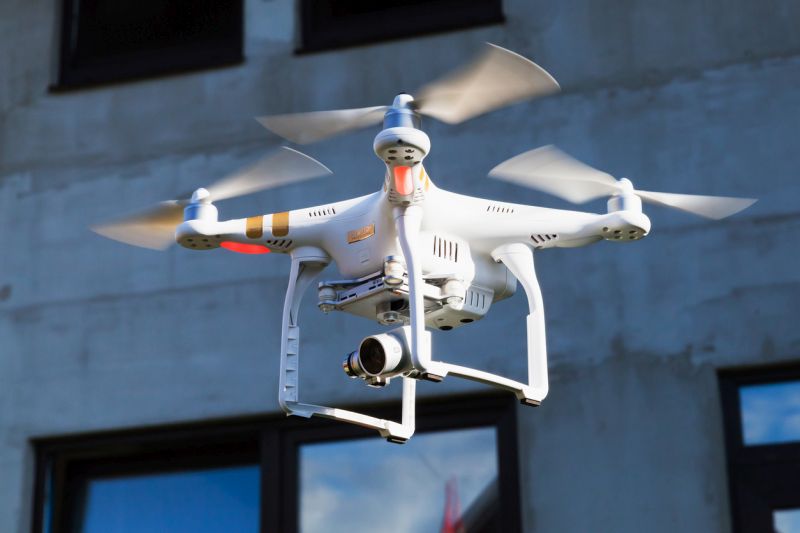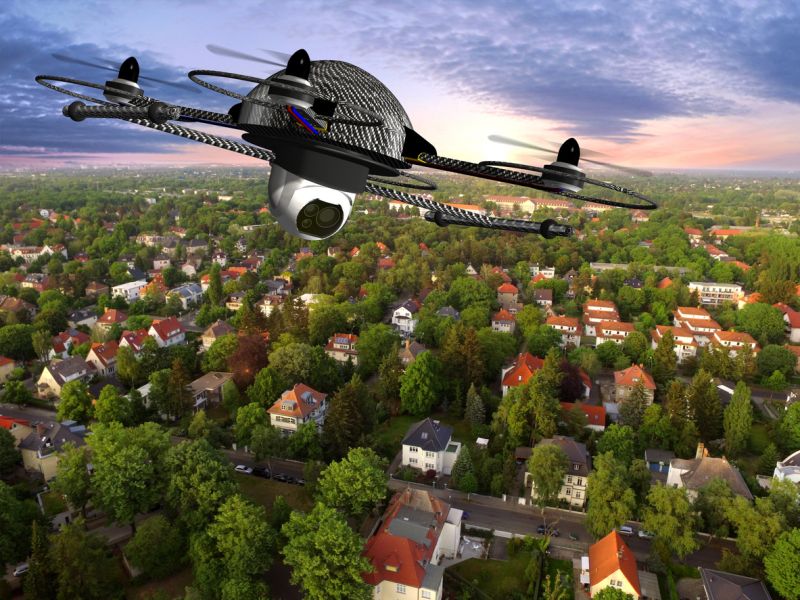If the Night's Watch had been able to purchase a cheapcamera-equipped drone, Jon Snow might have noticed the Night's Kingand his army of White Walkers before theysurprised and overran the Wildings' camp in Season 5 of HBO's“Game ofThrones.”
|Originally a tool developed exclusively for military operations,drones now hover at the horizon of widespread commercialapplication. Drones delivering online purchases and monitoringtraffic are yesterday's news; small and large businesses are nowexploring the feasibility of using drones for such varied tasks asproviding emergent medical services, waiting tables, providingwireless internet access, and inspecting industrial sites. Thisexplosion of drone use brings with it a plethora of new liabilityexposures and insurance coverage issues.
|Related: Drone insurance: Are your clientscovered?
|Anticipate liability claims
While tort litigation arising out of drone accidents has not yetinundated the court system, we can anticipate several types ofliability claims because of the diverse ways in which society hasbegun to use these machines. The obvious source of liability forusing a drone is its potential to cause bodily injury or propertydamage.
|Some drones can weigh up to 50 pounds and travel at speedsapproaching 80 miles per hour. A number of media reportsconsequently describe severe lacerations, eye loss, and soft tissueinjuries resulting from drone accidents.
|In addition to crashing into people and property, ubiquitousdrone use also creates the potential for numerous other types ofaccidents, such as automobile accidents due to distraction fromlow-flying drones, injuries resulting from dropped cargo, liabilityfor damaged cargo, or catastrophic accidents resulting from adrone's interference with aircraft.
|Liability for drone use, however, is not limited to bodilyinjury or property damage claims — drone operators alsoface significant exposure to claims of invasion of privacy.
|The commercial applications for drones frequently rely upon theuse of a video camera mounted directly to the drone itself, whichcan generate real-time images and video of the surroundingenvironment. Users can also modify their drones to add night visionand/or infrared lenses.
|Flying a drone with a recording video camera in a heavilypopulated residential area — such as among the variouscondominium high rises in Philadelphia — consequentlycreates a substantial risk that the drone operator will wrongfullyintrude upon the privacy of others.
|Related: U.S. says 7 million drones will take to skiesannually by 2020
|Individual drone users who frequently publish drone videos onthe internet and via social media are particularly susceptible tosuch liability. Similarly, drone operators whose cameras peer intooffices, warehouses, and industrial sites risk potential exposureto liability for theft of proprietary information and otherintellectual property rights.
|
Liability for using a drone doesn't fit neatly into thecoverage provided by the types of liability insurance policies thatmost individuals and businesses currently possess. (Photo:iStock)
|Cyberliability & hacking
Cyberliability and hacking are also concerns. Drones can serveas both collectors of information and mobile delivery systems.Consequently, drones used to collect sensitive information mightbecome targets for malicious software users seeking to steal data.A hacker might even usurp control of the drone itself for thepurpose of performing further wrongful or illegal activities, suchas theft of its cargo or stored information, trespass, invasion ofprivacy, or the transport of contraband.
|All of this potential for a drone operator's liability naturallyraises the question of whether, and to what extent, standardliability insurance provides coverage for potential claims againstthe user. Liability for using a drone, however, does not fit neatlyinto the coverage provided by the types of liability insurancepolicies that most individuals and businesses currentlypossess.
|CGL policy liability coverage
In the commercial context, the standard commercial generalliability (CGL) insurance policy that most businesses obtainprovides two separate forms of liability coverage: Coverage A,which insures against liability for bodily injury and propertydamage, and Coverage B, which insures against liability for othertypes of tort claims, such as the invasion of another's privacy.Consequently, a lawsuit alleging that a drone operator crashed adrone into a pedestrian or shattered a window potentiallyimplicates Coverage A, whereas a claim against a drone operatorthat he used the drone's camera to invade another's privacy mightimplicate Coverage B.
|This distinction is significant because Coverage A oftencontains an “aircraft” exclusion, whereas Coverage B does not. Thisexclusion usually states that coverage does not apply to bodilyinjury or property damage “arising out of the ownership,maintenance, use or entrustment to others of any aircraft, auto orwatercraft owned or operated by … ” any insured. The critical issuethat courts have not yet wrestled with is whether a droneconstitutes an aircraft within the meaning of this exclusion. While“ auto” is expressly defined in the standard CGL coverage form,aircraft is not.
|Related: 14 things you need to know about commercial dronesand insurance
|When confronted with an undefined policy term, most courts wouldenforce the plain meaning of the term and consult a standarddictionary to guide its interpretation, as in General Refractories v. First StateInsurance , 94 F. Supp. 3d 649,658 (E.D. Pa. 2015) (permitting resort to dictionaryto determine plain meaning of terms in policy exclusion).Merriam-Webster defines aircraft as “a vehicle (as an airplane orballoon) for traveling through the air.”
|
Many courts will construe an ambiguity in an insurancepolicy, especially in an exclusion, against an insurer and in favorof a policyholder's reasonable expectations. (Photo:iStock)
|Defining 'aircraft'
Federal air commerce and safety statutes — to theextent a court might look there for guidance — similarlydefine aircraft as “any contrivance invented, used, or designed tonavigate, or fly in, the air.” (See 49 U.S.C. Section 40102(a)(6)(2016)). Both of these definitions are arguably broad enough toencompass a drone and support application of the aircraftexclusion.
|Related: More drones-for-hire coming to U.S. skies underlandmark rules
|A policyholder might argue, however, that aircraft as used inthe exclusion is ambiguous in the drone context, because it isreasonable to construe the term in this exclusion as referringsolely to aircraft in the traditional sense, i.e., manned aircraftused to carry people or cargo. The policyholder might support thiscontention by pointing out that the exclusion also precludescoverage for the use of an auto or a watercraft, which aretraditionally manned vehicles used to move people or cargo.
|Many courts will construe an ambiguity in an insurance policy,especially in an exclusion, against an insurer and in favor of apolicyholder's reasonable expectations, as in Progressive Casualty Insurance v.Hurley , 765 A.2d 195, 202 (N.J.2001), (“courts will enforce only the restrictions and the terms inan insurance contract that are consistent with the objectivelyreasonable expectations of the average insured.”).
|Invasion of privacy coverage far from certain
Likewise, although Coverage B of the standard CGL form usuallydoes not contain an aircraft exclusion, coverage for invasion ofprivacy claims arising out of drone use in a particular case is farfrom certain. Coverage B usually contains exclusions barringcoverage for the knowing violation of the rights of another,criminal acts, and the infringement of copyrights, patents, tradesecrets or other intellectual property rights. Nor is cyberliability generally covered under a standard CGL policy.Consequently, claims alleging that an insured used a drone to stealdata or information or to engage in criminal trespass are unlikelyto be covered under a standard CGL policy.
|Related: If you invade someone's privacy with a drone, yourinsurance might not cover it
|Other types of liability insurance policies are also unlikely toprovide complete coverage for all of a drone user's foreseeableexposures to liability. Companies that already hold aviationliability insurance policies might have coverage for drone-relatedbodily injury or property damage claims, but it's highly unlikelythat such policies provide coverage for invasion of privacy, datatheft, or “hacking” claims. Liability insurance policies containingendorsements that limit coverage to designated premises or specificconstruction projects will not likely provide coverage fordrone-related accidents that occur away from those locations.
|
Coverage for a drone accident under a homeowner's policy islikely to turn on the type of drone used and the purpose for whichit was used. (Photo: iStock)
|Standard homeowners' policy
Similarly, whether an average individual's potential liabilityfor the use of a drone falls within the ambit of a standardhomeowners' insurance policy will likely depend on the applicabledefinition of aircraft. One standard homeowner's insurance coverageform, for example, defines aircraft as “any contrivance used ordesigned for flight, except model or hobby aircraft not used ordesigned to carry people or cargo.”
|Many homeowners' policies also exclude coverage for businessoperations. Coverage for a drone accident under a homeowner'spolicy is therefore likely to turn on the type of drone used andthe purpose for which it was used.
|Related: Your kid just got a drone. Should you getinsurance?
|Insurers have begun to introduce new coverage forms to alleviatethis uncertainty. In February 2015, the Insurance Services Office— which creates many standard insurance forms — releasedsix new commercial general liability coverage forms addressing theuse of unmanned aerial vehicles. Three provide limited coverageunder a standard CGL form — under Coverage, A, Coverage B, or both— while the other three exclude coverage under one or bothcoverage forms.
|A few insurers have recently introduced wholly new commercialliability insurance policies designed specifically for thecommercial use of unmanned aerial vehicles. Nevertheless, theubiquity of personal and commercial use of drones seems to beoutpacing the prevalence of these new insurance products.
|Surging source of new liability exposure
The personal and commercial use of drones joins the ranks ofcyberliability, terrorism, ride-sharing, and driverless vehicles asa surging source of new liability exposure. As the skies swarm withunmanned aerial vehicles, the courts may soon clog with suits overdrone-related accidents.
|Although the insurance community has forecast this risk and hasstarted to adapt, courts have not yet truly tested currentliability insurance policies or the new coverage forms recentlyintroduced in the context of drone use. Whether they have thatopportunity will depend significantly on how quickly insurers offernew insurance products designed to provide coverage for droneliability, and the extent to which policyholders purchase adequateliability insurance coverage prior to engaging in the widespreaduse of drones.
|Related: 10 steps to mitigating drone risks on constructionsites
|Sean P. Mahoney is an advisor to insurers and commercialclients who has extensive trial and litigation experience managingcomplex insurance coverage, life insurance, reinsurance, businesstort, and commercial contract disputes in state and federal courtsand in private arbitration proceedings. Contact him at 215-864-6342or [email protected].
|Geoffrey F. Sasso's practice includes defending matters onbehalf of product manufacturers, universities, retailestablishments, and construction companies. Contact him215-864-6245 or [email protected].
Want to continue reading?
Become a Free PropertyCasualty360 Digital Reader
Your access to unlimited PropertyCasualty360 content isn’t changing.
Once you are an ALM digital member, you’ll receive:
- All PropertyCasualty360.com news coverage, best practices, and in-depth analysis.
- Educational webcasts, resources from industry leaders, and informative newsletters.
- Other award-winning websites including BenefitsPRO.com and ThinkAdvisor.com.
Already have an account? Sign In


